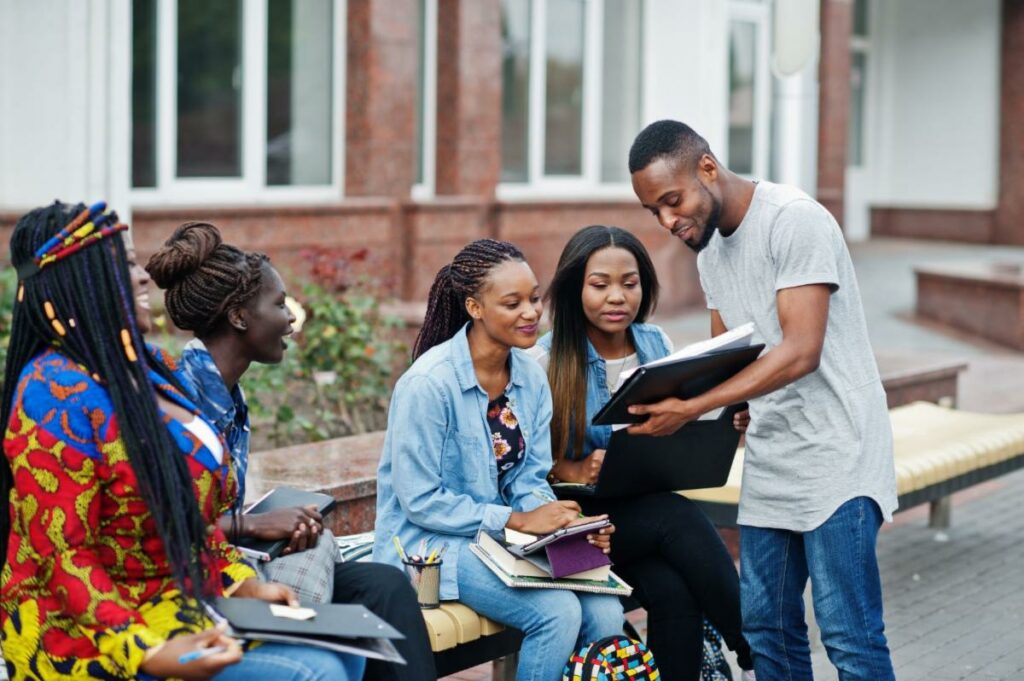The foundation of development is education, which shapes people’s, communities’, and countries’ futures. Africa benefits greatly from education since it may stimulate economic growth, encourage creativity, and reduce poverty. However, the continent’s expanding population presents formidable obstacles to high-quality education. In this piece, we examine how collaboration and innovation might help Africa’s education system change, solve important problems, and seize chances for sustainable growth.
The State of Education in Africa
Africa continues to lag in terms of educational achievements, even with recent improvements. Across the continent, issues like poor infrastructure, limited funding, a lack of teachers, and unequal access continue to be problems. Sub-Saharan Africa has the highest out-of-school rate in the world, according to UNESCO, with almost 32 million primary school-age children not attending school. Furthermore, quality is still an issue because many pupils do not have access to worthwhile and efficient learning options.
The Need for Innovation
The solution to the intricate problems plaguing Africa’s education system lies in innovation. Stakeholders can transform education and make it more inclusive, accessible, and successful by embracing new technology, methodologies, and approaches. Digital learning platforms, interactive teaching techniques, competency-based curriculum, and flexible learning pathways catered to individual requirements are just a few of the many efforts that fall under the broad category of innovation in education.
By increasing access to learning opportunities and resources, digital technology can help close the achievement gap. Africa has seen an increase in the use of mobile devices and the internet in recent years, which has given rise to creative teaching approaches.
Online learning environments, including Khan Academy, Coursera, and TED-Ed, provide free or inexpensive educational materials across a range of areas, enabling students to learn at their own convenience and pace. Similar to this, gamified learning platforms and smartphone applications engage students with immersive, interactive experiences that improve the effectiveness and engagement of learning.
A noteworthy instance is the Eneza Education platform, which reaches millions of students in Kenya, Ghana, Tanzania, and the Ivory Coast by offering instructional content via SMS and mobile apps. Eneza Education facilitates individualized learning and exam preparation by providing quizzes, lectures, and revision materials. This gives students the tools they need to enhance their academic performance and results.
Additionally, institutions like the African Virtual University (AVU) use digital technology to offer professional development and higher education across the continent.
AVU provides access to high-quality postsecondary education through online courses, virtual classrooms, and collaborative learning settings. This is especially helpful in underprivileged areas where traditional institutions are few.
In addition to digital technology, creative teaching and learning approaches help students become more engaged and develop their critical thinking and problem-solving abilities. Deeper knowledge of concepts and practical application are fostered via project-based learning, experiential learning, and inquiry-based techniques, which reorient the emphasis from rote memorizing to active engagement and discovery.
For instance, to provide high-quality education at scale in low-income areas throughout Africa, the Bridge International Academies approach makes use of teacher training, standardized lesson plans, and data-driven instruction. AVU provides access to high-quality postsecondary education through online courses, virtual classrooms, and collaborative learning settings. This is especially helpful in underprivileged areas where traditional institutions are few.
In addition to digital technology, creative teaching and learning approaches help students become more engaged and develop their critical thinking and problem-solving abilities. Deeper knowledge of concepts and practical application are fostered via project-based learning, experiential learning, and inquiry-based techniques, which reorient the emphasis from rote memorizing to active engagement and discovery.
For instance, to provide high-quality education at scale in low-income areas throughout Africa, the Bridge International Academies approach makes use of teacher training, standardized lesson plans, and data-driven instruction.
Bridge International Academies use best practices and technology to improve educational fairness and accessibility for underserved communities by guaranteeing accountability, consistency, and quantifiable learning outcomes.
To further advance educational justice and social transformation, programs like Teach For All seek out and prepare enthusiastic young leaders to teach in underprivileged schools. Teach For All participants give students the tools they need to reach their full potential and become positive change agents in their communities through immersive teaching experiences and on-going assistance.
Partnerships for Progress
To spur innovation and scale effective solutions in Africa’s education sector, cooperation and partnerships are crucial. Partnerships use the combined knowledge, resources, and networks of governments, non-governmental organizations, corporations, academic institutions, and civil society to address systemic issues and accomplish sustainable development objectives.
In Africa, PPPs—public-private partnerships—are essential to the funding and execution of creative educational initiatives. PPPs drive systemic change and enhance learning results by fusing private sector innovation and investment with public sector oversight to create educational infrastructure, technological solutions, and teacher training programs.
For instance, to support high-quality education for all children, especially those in low-income countries, the Global Partnership for Education (GPE) collaborates with governments, donors, and civil society organizations.
Millions of children throughout the world benefit from improved learning opportunities and stronger education systems thanks to GPE’s money mobilization, technical help, and policy dialogue.
Furthermore, corporate relationships are essential for providing funds, knowledge, and in-kind contributions to assist educational projects. Businesses like Google, Microsoft, and Huawei make investments in teacher training programs, digital literacy projects, and educational technology to equip students with the information and abilities necessary to succeed in the digital era.
Civil society organizations are essential for promoting education through grassroots projects, community involvement, and advocacy. Groups like Aflatoun International, Room to Read, and Camfed put in a lot of effort to increase females’ schooling, raise literacy rates, and provide marginalized populations more power through education.
Success Stories and Impact
The achievements of several projects and programs demonstrate the influence of creativity and collaboration in Africa’s education sector. Across the continent, creative ideas are changing lives and influencing the future with everything from better learning results to greater access and equity.
For instance, the iSchool Zambia project uses mobile technology to provide educational content to underserved and distant communities. It is being carried out by the Zambian Ministry of Education in collaboration with the British Council and other stakeholders. With the use of digital libraries, interactive lessons, and teacher preparation courses, iSchool Zambia improves learning possibilities and gives students the tools they need to succeed academically.
Similarly, gifted young Africans from underprivileged homes can apply for scholarships, leadership development opportunities, and mentorship through the Mastercard Foundation Scholars Program. The initiative gives students the opportunity to pursue further education, gain useful skills, and affect positive change in their communities and abroad by funding education and youth empowerment.
In order to advance the education sector in Africa and create chances for equitable and sustainable development, innovation and collaboration are essential. Through the adoption of novel technologies, techniques, and cooperative strategies, involved parties can surmount current obstacles and leverage the transformative potential of education to construct a more promising future for everybody. Africa must promote innovation, cultivate partnerships, and invest in the next generation of leaders and learners as it moves closer to achieving educational excellence and equity. By working together, we can make sure that education continues to be a driving force for wealth, empowerment, and positive change throughout the continent.


